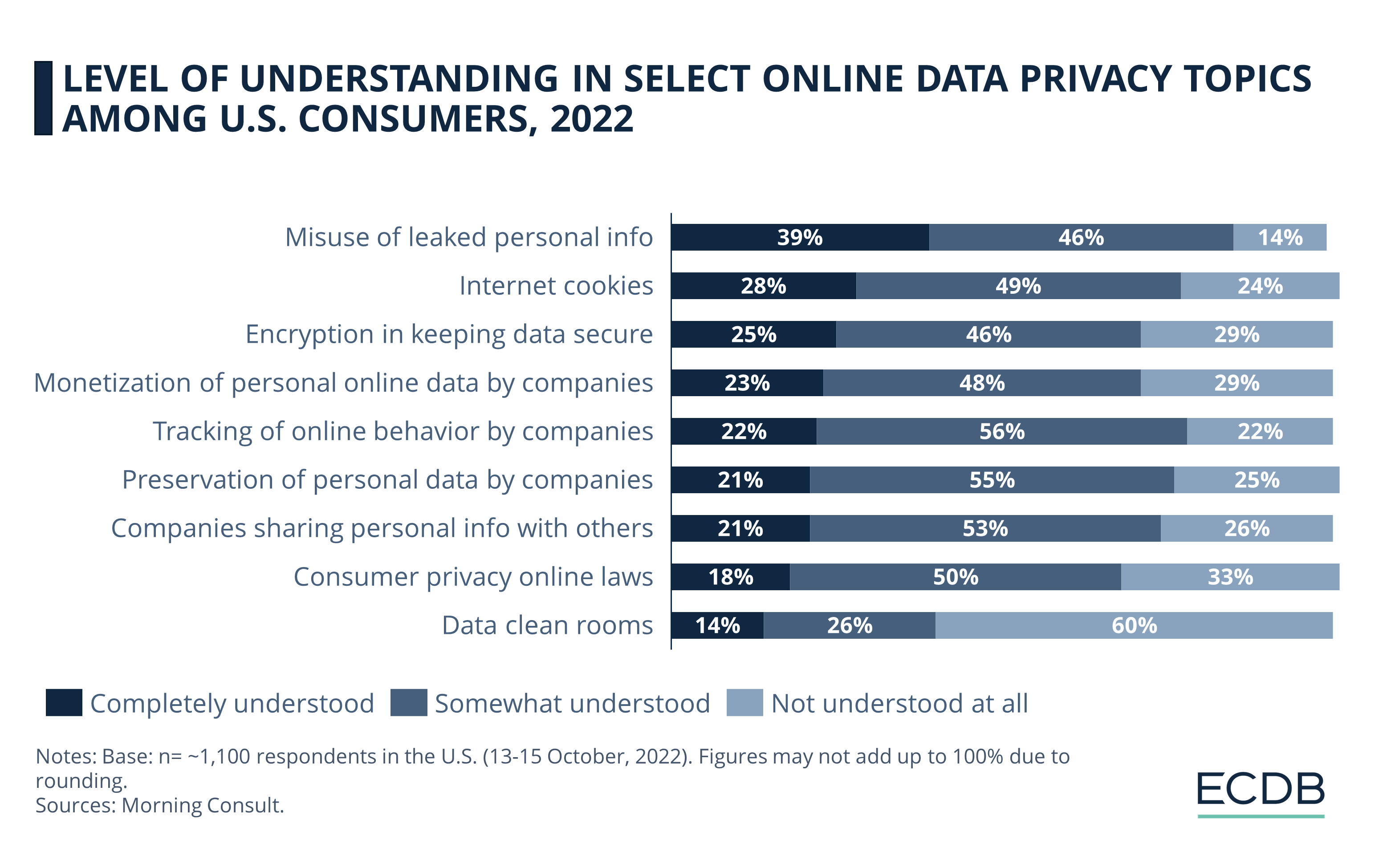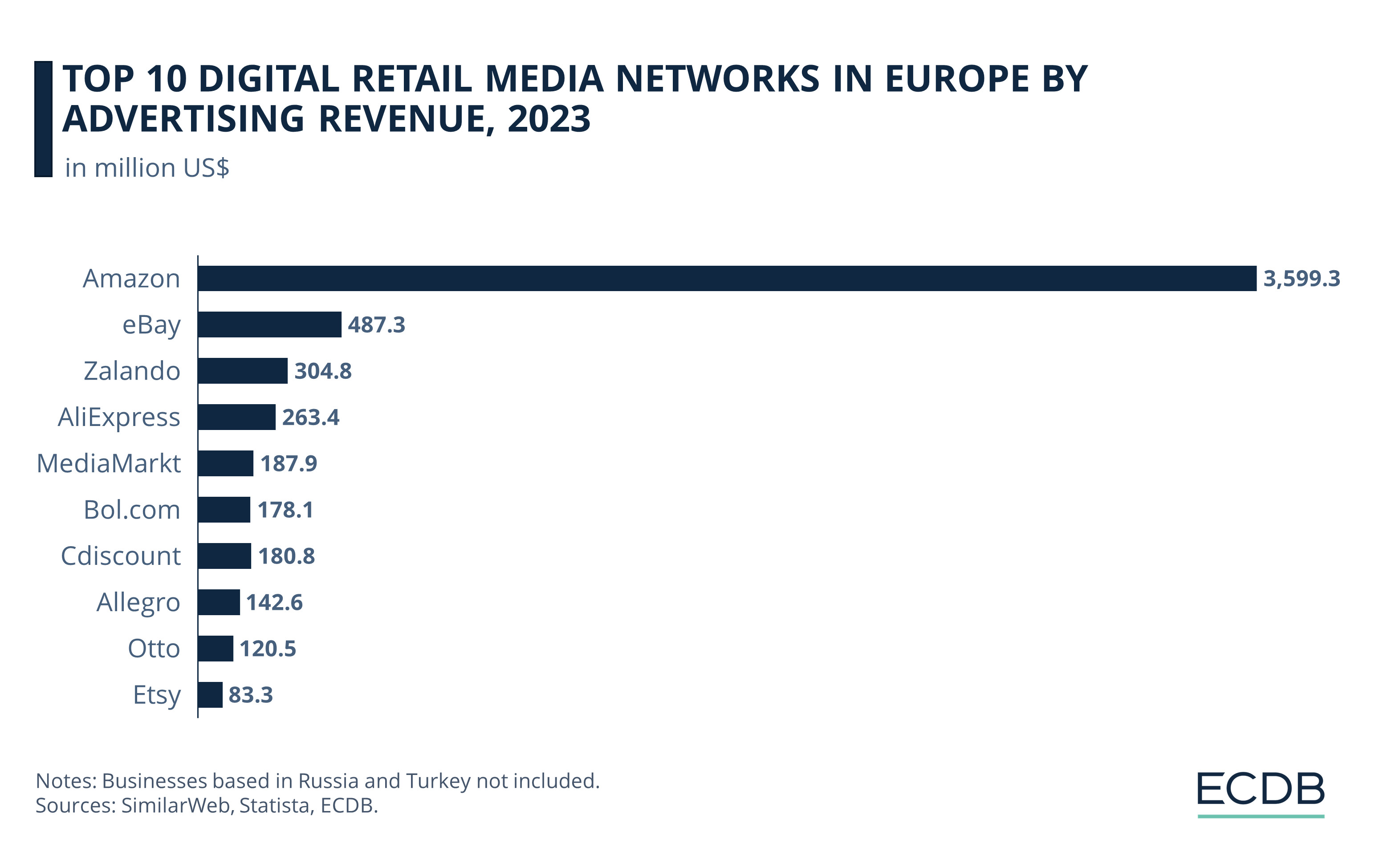eCommerce: Advertising Trends 2024
eCommerce Advertising in the Post-Cookies Era: Trends, Impact & Alternatives
Third-party cookies are slowly making their exit from our lives. How will the eCommerce advertising industry adapt and what alternatives will replace third-party cookies? We take a detailed look.
Article by Cihan Uzunoglu | March 14, 2024
eCommerce Advertising in the Post-Cookies Era:
Key Insights
Privacy Shifts: The decline of third-party cookies due to privacy concerns and regulations is leading online retailers and marketers to explore new methods for understanding and engaging with their customers.
Advertising Evolution: The move away from third-party cookies presents challenges for online advertising, prompting professionals to adapt by exploring alternative strategies and allocating more funds to direct TV/OTT advertisements and other media.
Google's Innovation: Google's Privacy Sandbox offers a forward-thinking solution to privacy issues, proposing a new way to group users by interest without compromising individual privacy, marking a significant transformation in how targeted advertising functions.
New Marketing Strategies: eCommerce advertising is adapting to privacy advancements through strategies such as zero- and first-party data collection, identity solutions, contextual advertising, and data clean rooms, allowing for effective audience engagement without the need for third-party cookies.
In recent years, the digital world has seen a significant shift regarding how user data is tracked across the internet. At the heart of this change is the gradual decline of third-party cookies, driven by increasing privacy concerns and tighter regulations.
Third-party cookies have been instrumental in digital marketing, allowing businesses to track users' online activities and target ads more effectively. However, their time is coming to an end, with major browsers like Safari and Firefox already blocking them, and Google Chrome planning to phase them out by 2024.
In the midst of all this, online retailers are looking for new ways to advertise and market their products without using third-party cookies. For some, this may be difficult as cookies have been around for a long time. But before we get into that, we need to understand why third-party cookies will soon be a thing of the past.
End of Third-Party Cookies
Data reveals how dependent online marketers and advertisers have become on third-party cookies to understand what consumers want. In a 2021 survey of senior marketers in the U.S., over 80% highlighted third-party cookies as important to varying degrees (51% “very important”, 32% “somewhat important”) for their marketing strategies, forming the bulk of the data they use.
This, however, will change over the course of the next few years. The push away from third-party cookies is motivated by several factors. First off, people are becoming more protective of their personal data, expressing discomfort with being tracked online. In relation to that, the advertising industry has faced significant regulatory scrutiny as it heavily relies on such tracking.
How Will This Affect Online Advertising?
Whether we like it or not, a paradigm shift is underway, and digital media professionals are well aware of this. A 2023 survey of digital media buyers from brands, agencies, and AdTech in the U.S. goes to show that above a quarter (27%) of respondents identified reduced access to consumer data and/or cookies as one of the top three challenges they expected to encounter in the next 12 months.

The extent to which this switch will affect different mediums is another question. According to a survey conducted in 2023 among retail and eCommerce advertising leaders in the UK, more than half (51%) anticipate an increased advertising budget in direct TV/OTT (over-the-top) ads due to third-party cookie changes. While above a third (36%) expect elevated budgets when it comes to display YouTube ads, this is followed by 31% for retail media networks, 23% in TikTok advertising, and 8% in search ads.
Despite the challenges posed by the end of third-party cookies, alternatives are emerging to fill the void. One such alternative is Google's Privacy Sandbox, a proposal to enable interest-based advertising without the privacy concerns associated with third-party cookies.
Google Privacy Sandbox
Google's response to privacy concerns and regulatory demands in this context has been proactive and innovative. The Privacy Sandbox is Google's initiative to replace third-party cookies with a privacy-first approach, grouping users into cohorts based on browsing patterns without compromising individual privacy. This move, set to begin with a small percentage of Chrome users in 2024, represents a major shift towards maintaining targeted advertising effectiveness while enhancing user privacy.
Google's collaboration with regulatory bodies like the UK's Competition and Markets Authority (CMA) underscores the careful consideration and industry-wide cooperation in this initiative. Despite challenges, the Privacy Sandbox initiative marks a significant step forward in creating a balanced digital advertising ecosystem that respects privacy without sacrificing campaign performance.
But Google’s initiative is only one aspect of the alternative solutions online retailers can utilize to replace third-party cookies.
eCommerce Advertising: Alternatives to
Third-Party Cookies
The search for new strategies in the wake of third-party cookies' decline is a hot topic for eCommerce advertising. With this in mind, online retailers are increasingly leveraging methods like zero- and first-party data to better understand and engage their audiences.
Though these practices have been around for a while, it is safe to assume that they will become more relevant as third-party cookies fade away from the advertising landscape.
Zero- & First-Party Data
Unlike third-party cookies – which are used for tracking across websites, therefore raising privacy concerns – first-party cookies enhance the user experience and are set by the website's domain. Zero-party data, distinctively, is voluntarily provided by users, enabling personalized experiences without the need for tracking behavior.
Through strategic use of email and SMS marketing, businesses can efficiently gather zero-party data, augmenting their insight into customer preferences. This strategy, in tandem with first-party data, fosters deeper customer engagement with personalized and interactive communication.
Thus, zero- and first-party data create a privacy-conscious framework for targeting and personalization in the post-cookies era, clearly separating from the privacy concerns associated with third-party data tracking.
Identity Solutions
In response to third-party cookie deprecation, identity solutions have become crucial, offering cross-device and household graphs, which map the relationships and interactions between devices used within the same household, for deeper consumer behavior insights. With device identifiers like IDFA (Identifier for Advertisers) waning, these solutions redefine addressability, relying on consented consumer info for cross-domain tracking.
Apple's IDFA is a unique device identifier for ad personalization. With the iOS 14.5 update, users could choose to share their IDFA, yet 96% of U.S. users opted out as reported by Flurry Analytics in May 2021.
Although plenty of identity solutions exist, clarity on their operation and impact remains elusive for many advertisers. Essential for targeted advertising in a cookieless era, these solutions navigate privacy challenges, ensuring ad targeting and measurement adapt to new privacy standards, maintaining campaign efficacy while respecting user consent.

Contextual Advertising
In eCommerce, contextual advertising serves as a key strategy, perfectly aligning ads with the content users are actively engaging with to enrich the shopping experience through heightened ad relevance. This technique involves scanning webpages for specific keywords, thereby automatically showcasing products or services that match the user's current interests.
For example, someone browsing a cooking site could see ads for kitchen gadgets or gourmet ingredients, ensuring ads complement the content naturally.
In 2023, the global contextual advertising market was estimated at US$227.3 billion globally, with projections suggesting a surge to US$562.1 billion by 2030. By focusing ads based on content rather than user tracking, this approach not only secures user privacy but also significantly boosts engagement chances, proving indispensable for eCommerce marketing strategies aimed at safe and impactful targeting.
Data Clean Rooms
Data clean rooms are specialized digital environments designed for the secure exchange and analysis of data between businesses, without compromising the privacy of user information. In essence, they enable different parties—like advertisers, publishers, and technology providers—to combine their datasets in a way that everyone can analyze the aggregated data without accessing the raw data directly. This setup ensures that sensitive user information remains protected.
These platforms work by encrypting the data contributed by each party. Then, through the use of advanced algorithms, they allow for the collective data to be analyzed to uncover trends and insights related to consumer behavior, ad performance, and more, all while adhering to strict privacy regulations.
Marketers in North America, motivated by the need for more privacy and control over data, are increasingly turning to data clean rooms. This was highlighted by a CMO Council and NCSolutions survey, where “privacy” (50%) and “more control over data” (46%) were mentioned among the biggest motivators to employ data clean room strategies.
As this approach allows for a deeper understanding of consumer behavior while maintaining high standards of data security and privacy, we expect data clean rooms to become more prevalent in the coming years for online retailers.
eCommerce Advertising in the Post-Cookies Era: Closing Thoughts
The transition away from third-party cookies represents a significant shift in eCommerce advertising, steering the field towards strategies that prioritize privacy and user engagement. The emergence of methods like contextual advertising, identity solutions, and data clean rooms underscores a trend towards ethical marketing practices that safeguard user privacy without compromising on effectiveness.
Adopting these new approaches, online retailers stand to redefine their interaction with consumers. This evolution in advertising strategy not only aims at reaching audiences but also engaging with them more directly and appropriately. Such a shift presents a chance to foster a more reliable relationship with customers, contributing to the long-term vitality and achievement of eCommerce businesses in an increasingly digital market.
Sources: TechCrunch, LinkedIn, Hustler Marketing, DBS, TripleLift, Securiti, IAS, Statista, Morning Consult, ReportLinker, Marketing Charts: 1, 2, Google: 1, 2, 3

Click here for
more relevant insights from
our partner Mastercard.
Related insights
Deep Dive
Next Generation eCommerce: Key Trends Shaping the New Age of Online Retail
Next Generation eCommerce: Key Trends Shaping the New Age of Online Retail
Deep Dive
Google's AI Project Jarvis Could Change Online Shopping
Google's AI Project Jarvis Could Change Online Shopping
Deep Dive
The Customer Journey in Online Shopping: It Begins with Search Engines
The Customer Journey in Online Shopping: It Begins with Search Engines
Deep Dive
TikTok Shop Expands Operation in the United States
TikTok Shop Expands Operation in the United States
Deep Dive
Fast Fashion Online Market: Fast Fashion Is Not Fair Fashion
Fast Fashion Online Market: Fast Fashion Is Not Fair Fashion
Back to main topics